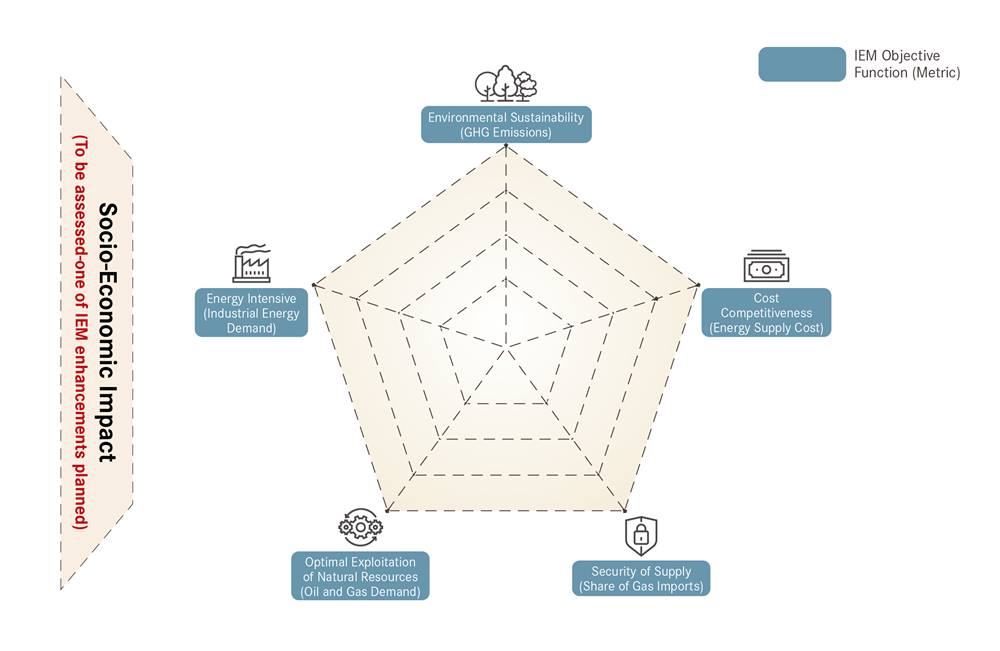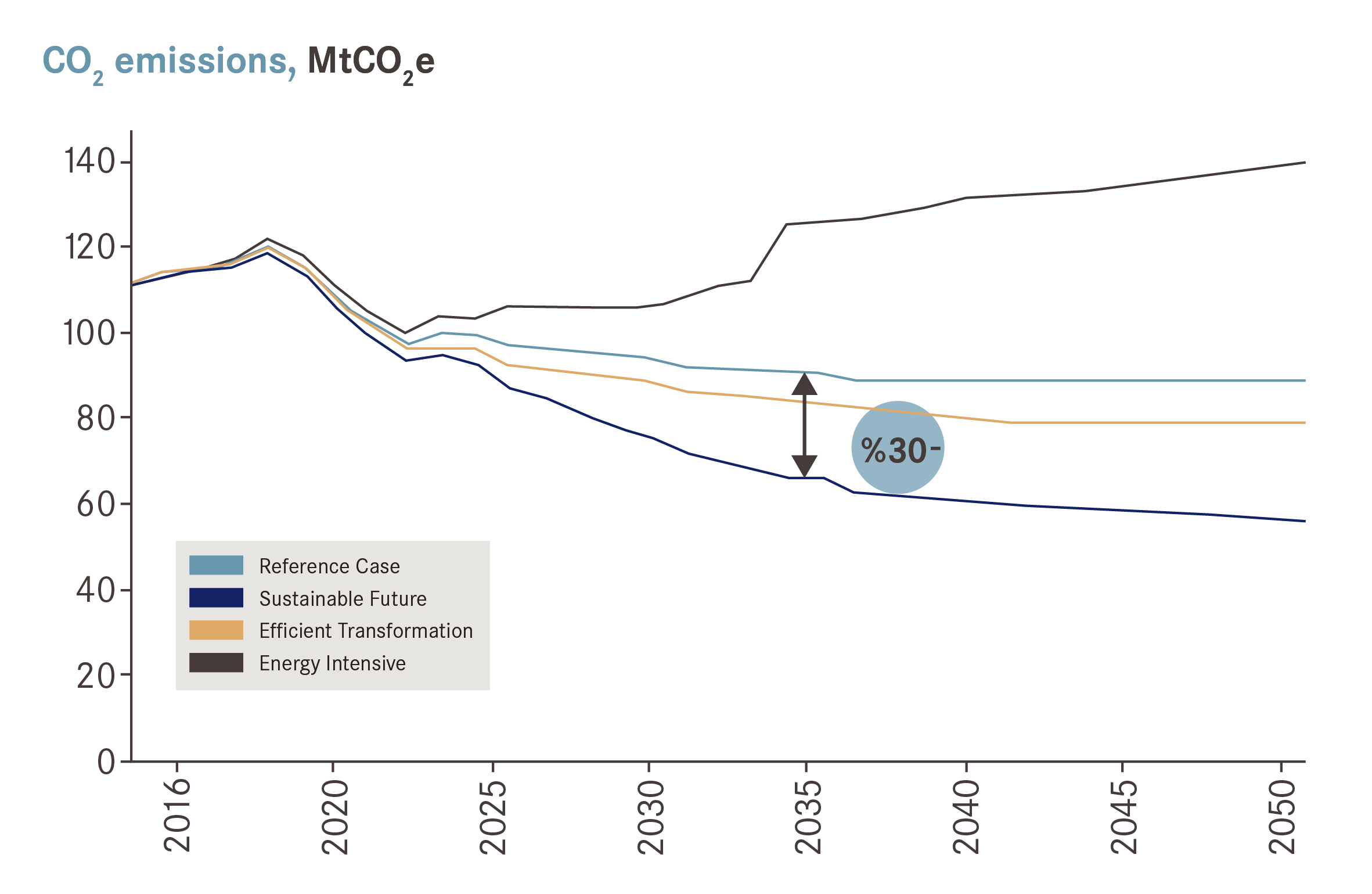Introduction
The Department of Energy (DOE) has developed, through extensive engagement with the multiple stakeholders across the energy sector, a comprehensive Abu Dhabi Integrated Energy Model (IEM). The IEM alternatively known as the ‘Energy Cube’ captures in an integrated way the whole value chain of the energy sector within the Emirate of Abu Dhabi with a comprehensive overview of the energy system for policy makers, business leaders and investors, and provide perspectives into the future up to the year 2050. The IEM is aimed to be a collaborative platform and used to inform the policy and decision-making process in the Emirate to help navigate the increasingly complex energy system with the competing objective functions involving inevitable trade-offs.
The collaboration with the energy stakeholders
The Energy Cube was developed through extensive engagement with Government stakeholders across the energy sector, transportation sectors, municipalities, and environmental agencies among others with over 25 stakeholders contributing in the development, alignment and review stages of the Energy Cube. The efforts made led to the finalization and successful launch of the IEM within WFES 2019.
In line with the DOE’s and the wider energy sector mandate, the IEM objective functions and the corresponding output metrics, represented by the Radar chart below, have been carefully selected (as per Energy Cube for 2020). These could be assessed and viewed for the energy supply and demand outlooks for five aspects (liquids, gas, water, power and others) across reference case and three scenarios at present.
Figure-1: Energy Sector Objective Functions against Energy Cube output metrics

As such, the IEM consists of five distinctive modules with time horizon up to 2050 namely gas, liquids, electricity and water, demand, and output module.
Figure-2: Energy Cube dimensions and energy sector coverage

The following is the description of the Energy Cube Modules:
Gas module
The gas module determines domestic gas balance (yearly and monthly), linked to power and domestic demand, generates the optimum cost curve, provides marginal cost, total cost of supply and the supply mix.
Liquids module
The liquids module determines the total available liquids supply for export and for domestic consumption.
Power module
The power module is based on McKinsey Global Power Model tool with ‘Gurobi’ tool to solve the mathematical equations of it, which optimizes capacity additions based on electricity demand and economic and other constraints and perspectives. The power module provides total system generation cost, optimum capacity and generation mix among other key outputs from the module.
Demand module
The demand module provides the energy and feedstock domestic demand projections through bottom-up assessment for 16 sectors covered under three main sectors; transport, buildings and industry and four transformation sectors; refining, electricity, water treatment and district cooling.
Output module
The Energy Cube generates possible trade-offs of the scenarios modelled on the identified objective functions in Figure-1 above through comparable key output metrics, including (but not limited to) the energy supply cost, energy system emissions, share of power and gas imports, and oil and gas demand.
A representation of IEM outputs across reference case plus three scenarios for illustration purposes are depicted below in Figure -3 and 4 respectively for selected output metrics namely energy supply cost and energy system emissions.

Figure-4: Energy system emissions (reference case + three scenarios)

Benefits of the Energy Cube
A single platform: The Energy Cube covers the full energy value chain in a single integrated first-of-a-kind platform in the energy sector ensuring an integrated planning and coverage of the full energy value chain. It will facilitate a coordinated, an integrated energy planning, build consensus and align on policy objectives and lead to efficient implementation thereof.
Unique sector collaboration: The Energy Cube represents a true cross-sector collaboration to align Government stakeholders’ policy-making across the full energy value chain. It will facilitate a coordinated, an integrated energy planning, build consensus, align on policy objectives and lead to efficient implementation thereof.
Policy pathway towards UAE vision, strategies and targets: The Energy Cube enables Abu Dhabi to confidently define the pathway towards meeting the UAE energy sector vision, strategies and targets (e.g. “50 by 50” clean power generation target set in the UAE Energy Strategy 2050 issues by the Ministry of Energy and Industry).
Ambitions and focus of the Energy Cube that will be enabled with our stakeholders:
Energy Efficiency: Pursue energy efficiency to reduce costs and emissions within the energy system.
Electrification: Pursue increased electrification of transport and industry to reduce CO2 and wider GHG emissions to improve the air quality in Abu Dhabi.
Solar Power: Pursue deployment of solar power generation to support a cost effective and sustainable future.
Sustainable Water: Achieve sustainable water balance and consumption to preserve Abu Dhabi natural resources for the future generations.
Energy Transition: Include the emerging and new technologies in the Emirate energy transition, and support the development of local skills.
Economic Diversification: Support with Abu Dhabi energy transition the economic diversification of the Emirate away from oil by embracing new innovative sectors.
Continual improvement and planned enhancements of the Energy Cube
In order to continually improve and enhance the energy IEM, DOE has set an initiative, which focuses on a number of enhancements as a capability building requirements and capitalization in relation to the IEM as a tool in policy making process. The key enhancements planned over 2020-2021 include the following:
- Development of a socio-economic module integrated with the Energy Cube, which will be capable of assessing the incremental impact of energy sector policies and scenarios on the society and economy.
- Development of a water optimizer module (desalinated, recycled and groundwater), to provide a long term 2050 water demand and supply outlook.
- Development of Energy Cube stakeholders’ collaboration portal, which would be used to efficiently exchange the model input data and raise the requests of the stakeholders to ensure the Energy Cube is kept live and relevant to the policy and decision-making process.
